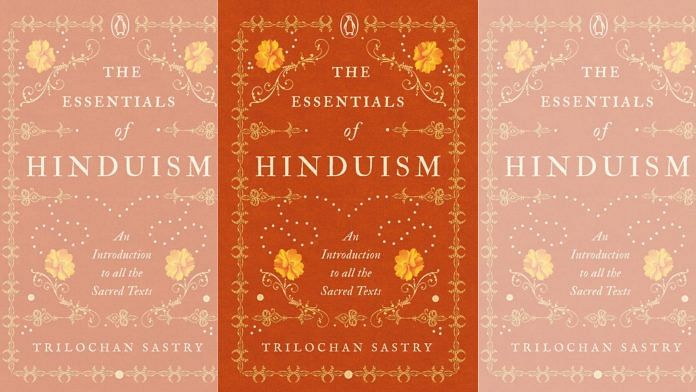New Delhi: Indian Institute of Management professor Trilochan Sastry’s book ‘The Essentials of Hinduism’ is meant for those interested in the religion, but in his words, “do not have the time or inclination to study all the texts”.
In a little over 250 pages, Sastry’s book unpacks all the religious scriptures in the Sanatan Dharma or The Eternal Religion, to showcase its essential ideas and concepts, origin, and significance, especially in contemporary times.
It also delves into the different systems of philosophy, the harmony of the various texts that have existed through centuries, and into the benefit that comes from a deeper reading of the scriptures.
Sastry writes in the book’s preface: “If this helps anyone to get a basic understanding of various aspects of Hinduism and provides a basis for further study from more detailed texts, the book would have served its purpose.”
Published by Penguin India, Sastry’s ‘The Essentials of Hinduism – An Introduction to All the Sacred Texts’ will be released on 24 November on Softcover, ThePrint’s online venue to launch non-fiction books.
The author says that a “short, introductory text covering the entire range of scriptures” may help a prospective student of the religion, who can otherwise be bewildered by the sheer volume of scriptures that have spanned through millennia. Not to mention the fact that these books are in Sanskrit.
The book deep dives into the sacred writings through 13 chapters, starting from the Vedas, Upanishads, the Bhagavad Gita, and the epics, touching upon the religion’s concepts and philosophies, till its contemporary and more popular form.
The chapters are roughly organised to reflect the scriptures’ chronological progression. It begins with the oldest and holiest – the Vedas and the early Upanishads and moves on to The Shat Darsanas, also known as the Six Philosophies, and The Brahma Sutras. The Bhagavad Gita is then discussed in a subsequent, brief chapter.
The Vedas, the Brahma Sutras, and the Bhagavad Gita are considered the “prasthana traya”, or the three foundational scriptures of Hinduism, the author explains. He presents other sacred writings of Hinduism — the Puranas, the Agama Sastras, and the Itihasas, or the Great Epics.
Sastry also talks in detail about the Upavedas, the Vedangas, the Smritis, several writings in the Gita, and a few spiritual texts based on the Ramayana.
“The attempt is to present the scriptures as they are without any interpretation,” the author says.
Sastry, who has been interested in Hinduism since adolescence and has lived in monasteries, studied sacred texts, attended classes by various teachers and visited pilgrimage sites, tries to comprehensively break down these texts to encourage interest among those who are curious about Hinduism.
Also read: ‘The People of India’ — new book traces grassroots political actors, how they shape New India



